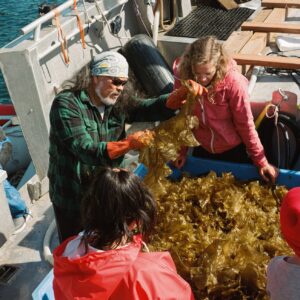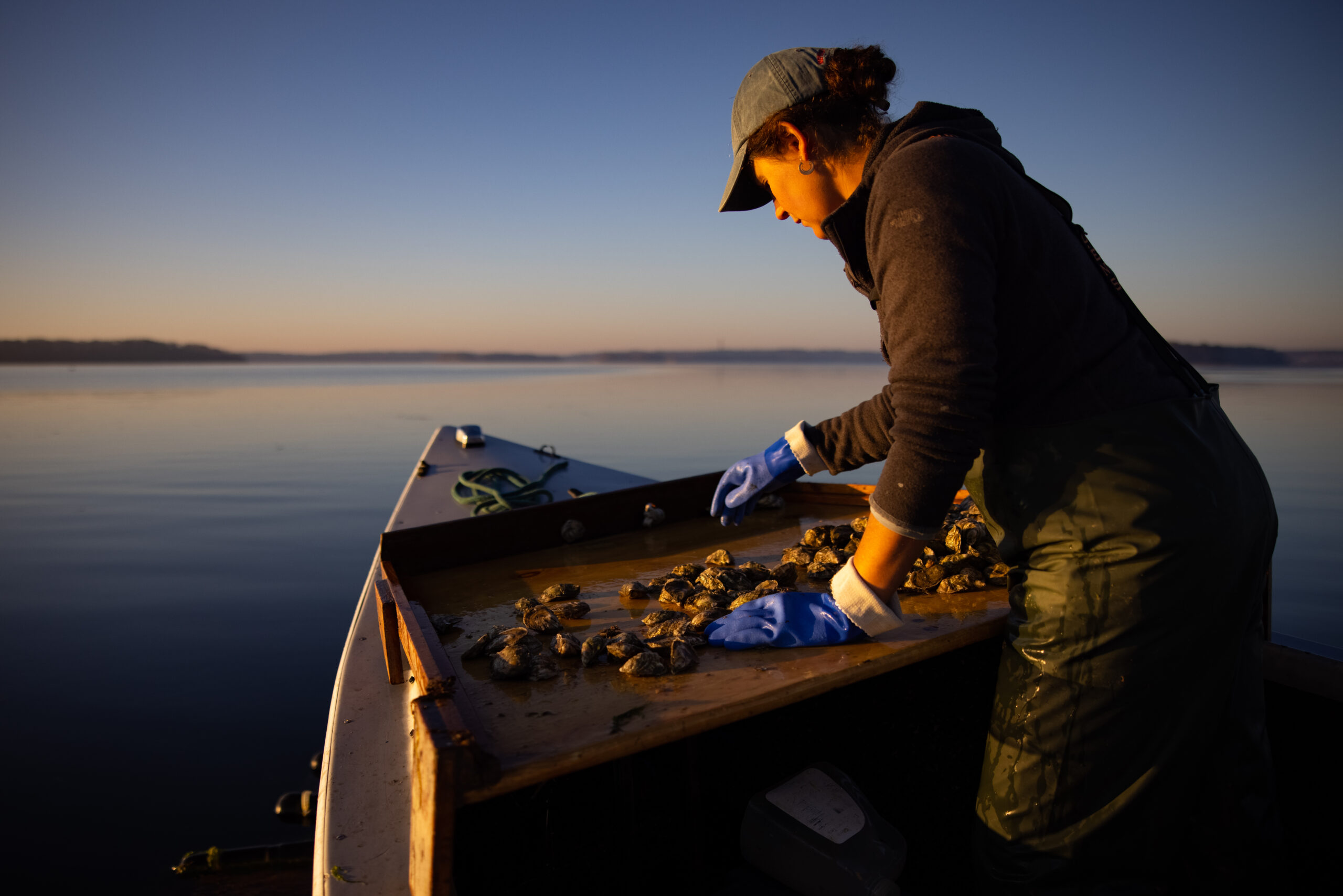For many folks, food choices primarily depend upon convenience, price, and what they’re hungry for in the moment. I think back to my college days of going to Dunkin’ Donuts or the local 7-11 at ungodly hours to grab a honey bun nearly the size of a hub cap or a microwaveable breakfast burrito. I spent a couple of bucks and later regretted the impulse, only to repeat the folly the next week. Reading labels wasn’t my thing.
My evolution came from two influences prior to launching One Fish Foundation in 2015. First, my wife Jaime had spent over 10 years in the restaurant industry and is fanatical about knowing where food comes from and what’s in it. I’m now a regular at several farmers markets.
Second, my digestive system changed with age, forcing me to recalibrate what I ate. Honey buns and any other greasy fast food with a bunch of unpronounceable ingredients were out. Whole foods like vegetables, fruit and proteins that come from local producers now dominate my grocery list. Getting to know the story of the food that I eat, often through direct relationships with producers, is now my values compass.
Conveying that to a class requires engaging students in the conversation about why they should care. Of course the health benefits of knowing what you eat are easy to explain (even if the message doesn’t always resonate). The bigger challenge is to get students of all ages to take responsibility for food choices by learning the story. Where does it come from? How was it grown or harvested?
In essence, I challenge students to learn where their values lie on the food spectrum, first by getting them to understand why placing value on the food they eat is important.

Kelp drying at Smithereen Farm in Pembroke, Maine. (photo: Courtesy Smithereen Farm)
Aquaculture, a growing interest
Aquaculture has become a great classroom case study on the broad values spectrum across seafood consumption, spotlighting how money and influence can shape markets and our values. The fastest growing sector in the global seafood market, aquaculture makes up nearly 50% of all seafood production, representing 7% of US seafood production and 24% of its value.
I live in Maine, which produces about 85% of the country’s seaweed. We have a vibrant kelp and bivalve aquaculture community here largely populated by small-scale producers that work directly with customers or local distributors, bolstering the local economy. Their small sea farms generally have an ecologically positive or net-neutral impact on surrounding marine ecosystems because what they grow already lives in harmony with those ecosystems.
On the other side of the values scale, industrial finfish operations capsize both ecological and economic balance, creating environmental threats that harm coastal communities while also shaking local economies. Google “farmed salmon disease” and “farmed salmon escape” and you’ll find plenty of information about how trapping hundreds of thousands of fish in small netpens invites a host of issues like disease, parasites, and suffocation. To deal with those issues, many operations pound the fish with antibiotics, pesticides, and other unwanted chemicals.
Feeding the fish also presents several challenges. The industry either crushes forage fish (herring, mackerel, sardines, etc.) populations to grind them up for farmed fish food, or it uses GMO mono-crop soy to feed fish. Vacuuming up global forage fish populations threatens to devastate marine ecosystems and magnify global hunger as massive operations pilfer the local food source for countless subsistence, artisanal, and small business operations in coastal communities around the world.
The gap between local, values-aligned producers and the likes of Mowi, Cooke Aquaculture, and other global farmed salmon giants is huge. But many seafood eaters are confused about what aquaculture with values means, especially in light of powerful messaging from Mowi et al that they’re going “to feed the world.” They’d prefer to lump the stories of small-scale operators in with the big giants in hopes the real values narrative of independent oyster growers can mask the public relations challenge of mass salmon die offs and displaced protein (taking food off the plates of subsistence fishermen in West Africa to feed a global middle class).

Dune Lankard, Eyak Athabascan, founder of the Native Conservancy, sharing Indigenous knowledge about responsible kelp harvest in Alaska.
A values roadmap
Combating that false narrative requires uplifting the stories of small-scale growers who care about finding balance in coastal waters and working within their communities. To that end, a group of several sister organizations, spearheaded by the North American Marine Alliance, recently developed a set of aquaculture values that can serve as a benchmark for growers, businesses, distributors, chefs, advocates, and most importantly, consumers.
The Aquaculture Values Report is the product of several years of dialog, focus groups, surveys, intensive research, and direct community involvement. The report not only provides a set of clear, focused values, it also delivers case studies and suggested policy approaches to expand values-aligned aquaculture. Together, these examples and policy recommendations serve as a shield against the threat of industrial operations co-opting these values for their own use (further confusing consumers).
I learned much in the process in helping to shape the visioning project, participating in two focus groups (one at the Local Catch Local Seafood Summit in Alaska in 2022), and providing some strategic guidance and feedback as part of a diversified and committed team.
The report is backed by science and guided in part by the shared values and direct input from folks in the Slow Fish, Local Catch, and Fish Locally Collaborative networks, among others.
I invite you to check out the report and see if these values align with yours. What questions arise for you about aquaculture near you and on a global scale? How else would you address the confusion that many folks have about what farmed seafood is best?
These are the questions I ask my students. There aren’t really any right or wrong answers. Just signposts to help us determine where our values around aquaculture lie.
Top photo: Emily Selinger of Emily’s Oysters, sorting her product in Casco Bay near Freeport, Maine. Courtesy Emily Selinger.


